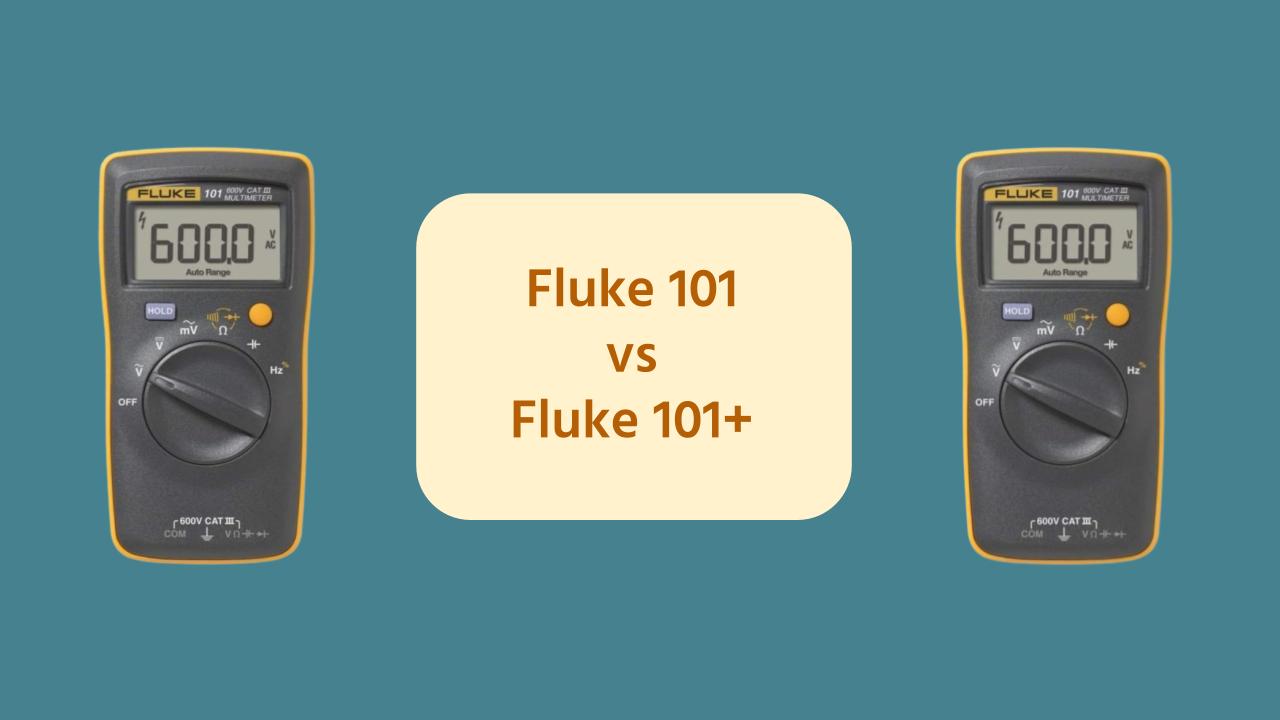The Fluke 101 is a basic pocket digital multimeter designed for quick verifications and field service use. It is known for its compact size and ease of use, making it ideal for students, DIY enthusiasts, and basic professional applications.
The Fluke 101 can measure voltage, resistance, and capacitance and includes continuity and diode testing. It operates with a safety rating of CAT II 600V, providing reliability for low to medium voltage tasks.
There’s a new related product called the Fluke 101+ (note the plus at the end). It’s however not very obvious what the product differences are.
In this post we look at the main features and the differences between the 101 and 101+.
Here’s a comparison table outlining the main differences between the Fluke 101 and the Fluke 101+ multimeters:
| Feature | Fluke 101 | Fluke 101+ |
|---|---|---|
| 💳 Price | Check Price | Check Price |
| Voltage Range (AC/DC) | Up to 600V | Up to 600V |
| Current Measurement | No current measurement | No current measurement |
| Resistance | Up to 40 MΩ | Up to 40 MΩ |
| Capacitance | Up to 100 µF | Up to 100 µF |
| Display Count | 6000 counts | 6000 counts |
| Safety Rating | CAT III 600V | CAT III 600V |
| Additional Features | None | Built-in Stand ✅ |
The only difference between the 101 and 101+ is the built in stand at the back of the Fluke 101+
🏷️ Fluke Multimeter Deals ⭐⭐⭐⭐⭐
What’s the purpose of this stand?
The stand at the back of the Fluke 101+, commonly referred to as a tilt stand or kickstand, is designed to prop up the device at an angle.
This feature enhances user convenience and visibility by allowing the multimeter to sit upright on a flat surface. It makes it easier to view the display while working on other tasks, improving both safety and efficiency during measurements.
🏷️ Fluke Multimeter Deals ⭐⭐⭐⭐⭐



